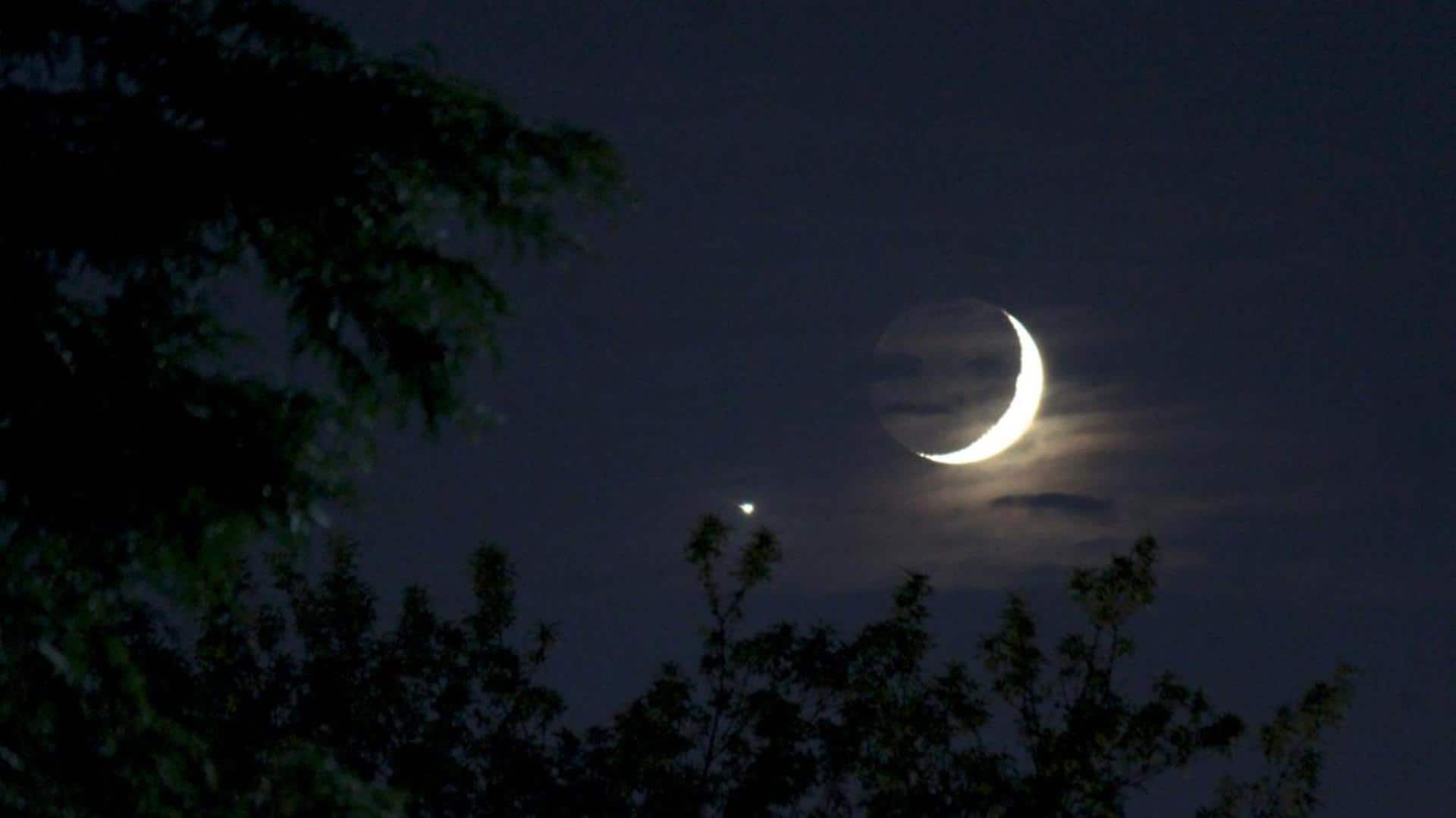
Jupiter, Venus, Moon will come together in rare conjunction today
What's the story
A rare celestial event is bound to occur today just after sunset. Jupiter and Venus, the brightest planets visible from Earth, have been edging closer to each other all through February. Today, the Moon will join the scene. If the weather permits, you should be able to catch this spectacular occurrence in the evening sky.
Context
Why does this story matter?
The rare green comet just crosses us and now stargazers are in for another visual treat. Venus, Jupiter, and the Moon will be seen together in a rare celestial event that will be visible across the globe. At the beginning of February, Jupiter and Venus were separated by 29 degrees, and it will come down to 2.3 degrees by the end of February.
Event
The crescent Moon will be visible along with Jupiter, Venus
Right after sunset, Jupiter and Venus will be visible in the western sky and along with them you will be able to see the crescent Moon. The waxing crescent Moon will be just four percent illuminated and will be seen at around 7 degrees below Venus. Jupiter will be seen above Venus and Moon and will be separated by almost eight degrees.
Visibility
The event will be visible on February 22 as well
According to Earthsky.org, this celestial event will be visible on the evenings of February 21 and 22 as well. On February 22, the Moon will be just a degree away from Jupiter, with Venus in between. When the Moon moves away, Venus and Jupiter will continue coming closer to each other and will form a conjunction on March 1.
Magnitude
Venus will be shining brighter than Jupiter
When the two planets are at their closest on March 1, Jupiter will be shining at -2.1 magnitude—twice as bright as Sirius—the brightest star in the night sky. But Venus will be the brighter one and will be shining at -4.0 magnitude. In fact, Venus is the third brightest celestial object, after the Sun and Moon.
Planetary conjunction
What is a conjunction?
A conjunction is a celestial event where two planets, a planet and the Moon, or a planet and a star appear close together in Earth's night sky. Conjunctions often occur between planets in our solar system because the orbital path of the planets around the Sun is approximately in the same ecliptic plane and hence, they pursue similar paths across the sky.
Information
Moon will pair up with Mars on February 27
On February 27, the Moon will pair up with another planet, Mars. If you look in the southwest direction after sunset on February 27, you will be able to spot the Moon and Mars together and they will appear less than a degree apart.